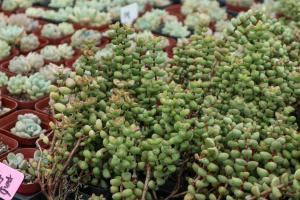Should I Plant Vegetable Seeds in Pots First or in the Ground?
Deciding whether to plant vegetable seeds in pots or in the ground can be a difficult decision for many gardeners. Both methods have their advantages and disadvantages, and which one you should choose will depend on a variety of factors. In this article, we'll take a closer look at the pros and cons of each method to help you make an informed decision.
Planting in Pots
Many gardeners prefer to begin by planting their vegetable seeds in pots. This method allows for greater control over the growing conditions, as you can adjust the amount of light, water, and nutrients that each plant receives. Additionally, planting in pots means that you can start your plants earlier in the season and move them indoors in the event of inclement weather.
Another advantage of planting in pots is that it can be less intimidating for novice gardeners. Starting with a few pots is a great way to learn the basics of growing vegetables, without committing to a large-scale garden. If you're short on outdoor space, or if your soil is poor quality, planting in pots is also a good option.
However, there are some downsides to planting in pots. One of the biggest disadvantages is that some plants may become root-bound before you're ready to transplant them into the ground. This can stunt their growth and reduce their overall yield. Additionally, planting in pots can be more time-consuming and labor-intensive, as you'll need to monitor the plants closely and adjust their growing conditions as needed.
Planting in the Ground
Planting vegetable seeds directly in the ground is a time-honored tradition among gardeners. This method is often preferred by those who have plenty of outdoor space and fertile soil. When you plant in the ground, your plants will have plenty of room to grow and access to all the nutrients they need from the soil.
Another advantage of planting in the ground is that it can be less expensive and less time-consuming than planting in pots. Once you've prepared your soil and planted your seeds, you can sit back and let nature take its course. However, it's important to note that this method can be more challenging for novice gardeners, as there is less control over the growing conditions.
One potential disadvantage of planting in the ground is that it can be more difficult to protect your plants from pests, diseases, and extreme weather events. Additionally, if your soil is poor quality or contaminated, you may need to take extra steps to improve it before planting your seeds.
Which Option is Right for You?
Ultimately, the decision to plant vegetable seeds in pots or in the ground will depend on your individual circumstances. If you're short on space, if your soil is poor quality, or if you're just starting out, planting in pots may be the best option. However, if you have plenty of outdoor space and fertile soil, planting directly in the ground may be more convenient and less labor-intensive.
Regardless of which method you choose, there are a few key tips to keep in mind. First, make sure to choose a sunny spot for your plants, as most vegetables require at least six hours of direct sunlight per day. Second, be sure to water your plants regularly and fertilize them as needed. Finally, monitor your plants for signs of distress, such as wilting or yellowing leaves, and take action to address any issues as soon as possible.
Whether you choose to plant in pots or in the ground, growing your own vegetables can be a fun and rewarding experience. With a little bit of patience, hard work, and know-how, you can enjoy a bountiful harvest of fresh, delicious produce right in your own backyard.

 how many times do yo...
how many times do yo... how many planted tre...
how many planted tre... how many pine trees ...
how many pine trees ... how many pecan trees...
how many pecan trees... how many plants comp...
how many plants comp... how many plants can ...
how many plants can ... how many plants and ...
how many plants and ... how many pepper plan...
how many pepper plan...































